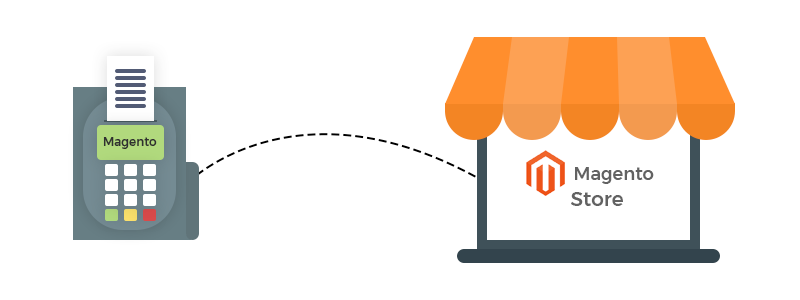What is Multi-Source Inventory Magento 2?
Magento will soon release the latest version 2.3 with MSI (Multi-Source Inventory) feature. MSI is about multi-source inventory Magento 2 management.
MSI enables the sellers to reflect their multiple inventory sources of a product in Magento without using or integrating any additional extensions.
For each product, the sellers can list the multiple sources of the inventory in Magento and let them track the stock conveniently.
Catalog Inventory
Before MSI, the e-commerce platform was having a single Magento 2 warehouse system ie; catalog inventory. No matter how many sources of inventory the seller is having, the seller can reflect them as a single source.
Suppose, for a product a seller is having 100 stock in warehouse 1 and 150 stock in warehouse 2. But in Magento, the seller will reflect the stock of that product as 250. The seller can’t reflect the inventory as per each warehouse.
In catalog inventory, the sellers reflect the product inventory as a part of the single source that and sell products to multiple sales channels from that single source only.
Why is Multi-Source Inventory Magento 2 Important?
Catalog inventory management works perfectly fine if you are a single-source seller. What if you are a multi-source seller and want to reflect the multi-source of your inventory or if planning to scale the sources or warehouses?
The sellers can’t define and manage the multiple sources of their inventory in Magento. Therefore, catalog inventory limits the multi-source sellers to define and track the inventory of each source separately.
But, MSI will enable the sellers to manage multiple sources simultaneously and scale with expanding business needs and requirements.
In Magento, the multi-source sellers will list multiple sources as per the requirement. The sources could be your warehouses, physical stores, storage centers, etc.
While configuring the sources for a product, the multi-source sellers define the source information and the inventory available.
Benefits of Multi-Source Inventory in Magento 2
Marketplaces
A Magento 2 Marketplace is a great concept that allows multiple sellers to list their products. But in the marketplace, when multiple Magento 2 sellers sell the same product it’s become highly difficult to manage the inventory of the same product by multiple sellers.

For example:
There are three sellers (S1, S2, and S3) selling one product (P1). Each seller is having separate sources for their product W1, W2, and W3 with different inventory say source W1 is having inventory of 100, source W2 110, and source W3 200.
Now, using MSI in Magento, the inventory of these three sources will be managed and represented separately. This way it becomes convenient to manage the P1 inventory of each seller separately.
Dropship/Multi-Source Sellers
Due to the growing business, the sellers are required to manage various inventory sources in multiple geographical locations. Also, it’s a highly expensive and time-consuming task to deliver the goods from a single warehouse system.
What if you as a seller supposed to fulfill the order for New York but you have a single warehouse in Florida. Now imagine the cost and time you will require to invest. It’s quite high, isn’t it?
But managing all the inventory sources in Magento was not possible before the MSI. So, to eliminate these problems and enable smooth logistics, the MSI concept was introduced where the multi-source sellers can manage their multi-warehouse inventory conveniently.

Webkul Magento 2 Dropship module already offers the MSI concept in the module so that sellers can add and manage their multiple warehouse inventory in Magento without any hassle.
Point of Sale
Magento 2 POS for online retailers has evolved significantly over time and is more popular than ever. Because POS allows retail store owners to sell online and in-store for a seamless selling experience.
MSI will let the sellers manage the separate inventory for their brick-and-mortar store and online store for their products in Magento.

Webkul POS system already possesses the split inventory management functionality way before the MSI. The seller can split the product inventory between an online shop and a POS outlet.
Not only a single POS outlet, Webkul POS System even supports multiple pos outlets with a split inventory.
Multi-Channel Selling
The sellers want to expose their product range to a large buyer base. For this, they integrate their existing online store into some popular sales channels like:
- Magento 2 Amazon
- Magento 2 eBay
- Magento 2 Etsy
- Magento 2 Walmart
- Magento 2 Facebook Shop
- Magento 2 Instagram Shopping
But maintaining separate sources for each channel is not available in Magento. This won’t allow the seller to track the inventory for each channel separately.

For example, a seller is doing multichannel selling with Amazon and Magento 2 stores. Currently, the sellers have single-source inventory management for all the channels. But MSI enables the sellers to maintain the multi-source inventory for their sell channels separately.
If you have any issues, please feel free to add a ticket and let us know your views at https://webkul.uvdesk.com


Be the first to comment.